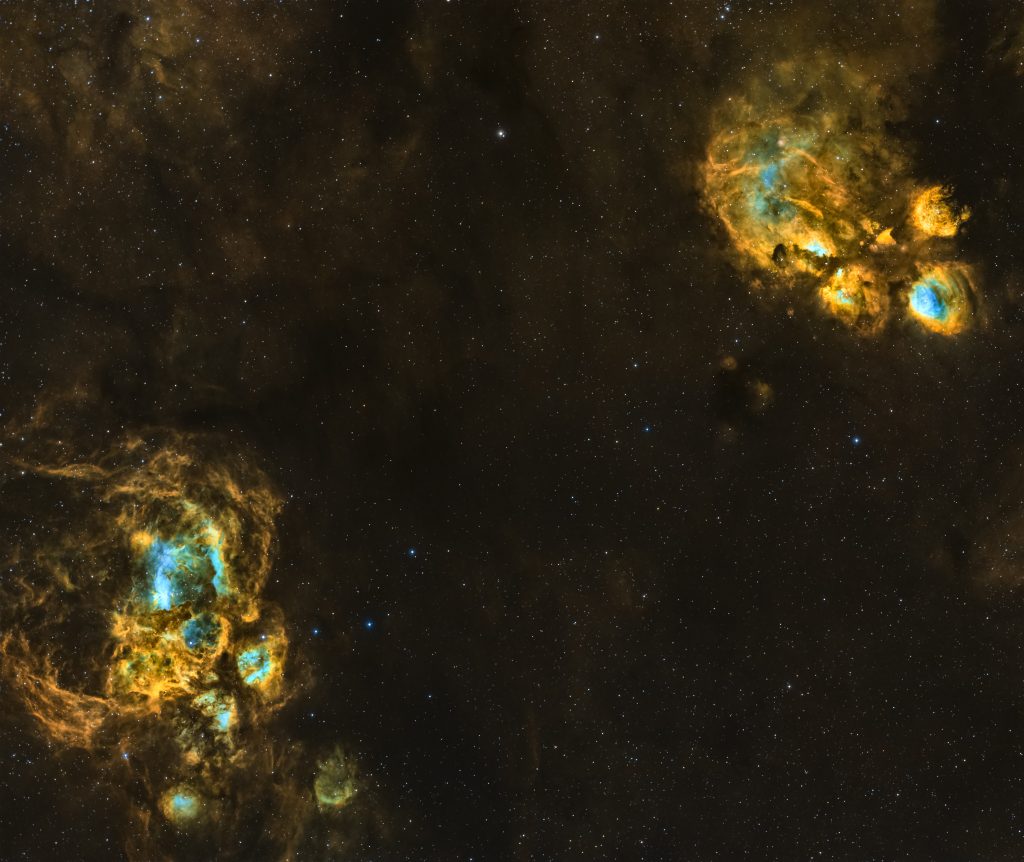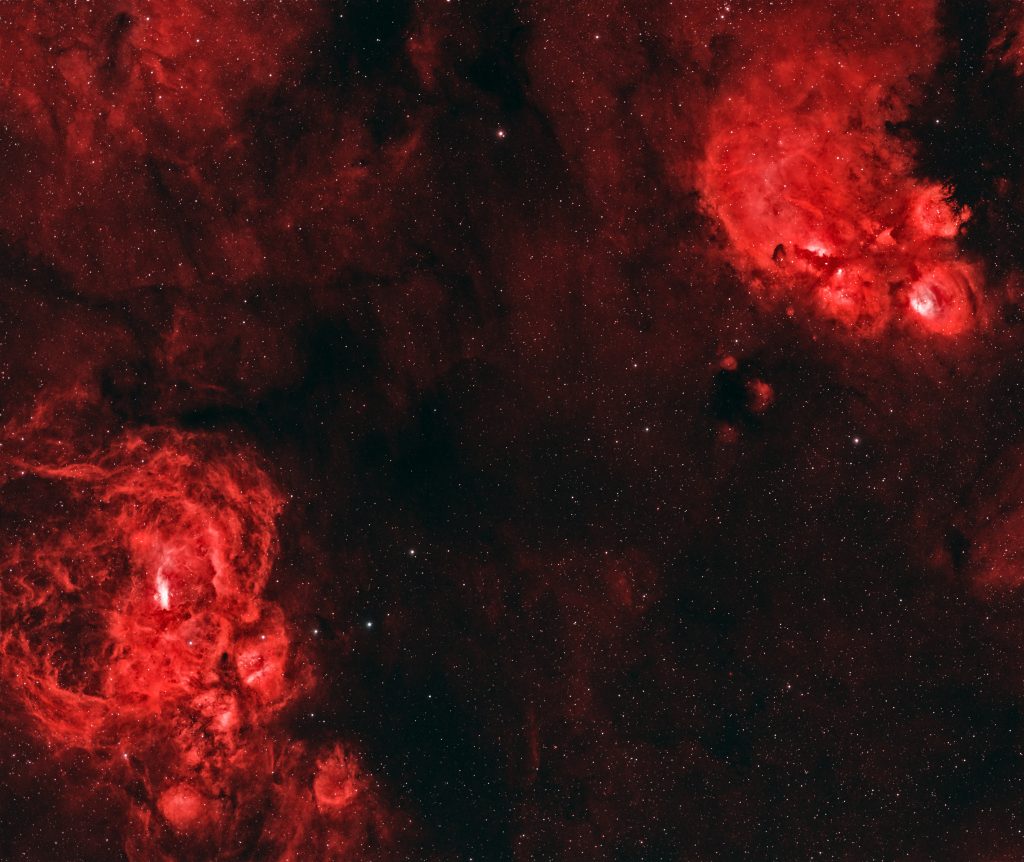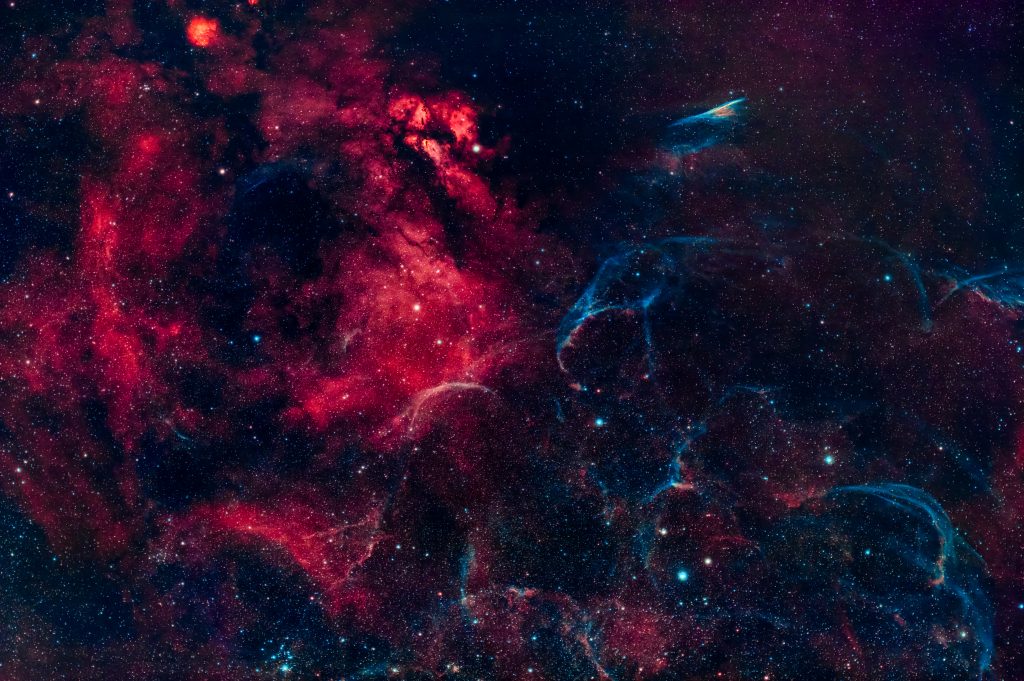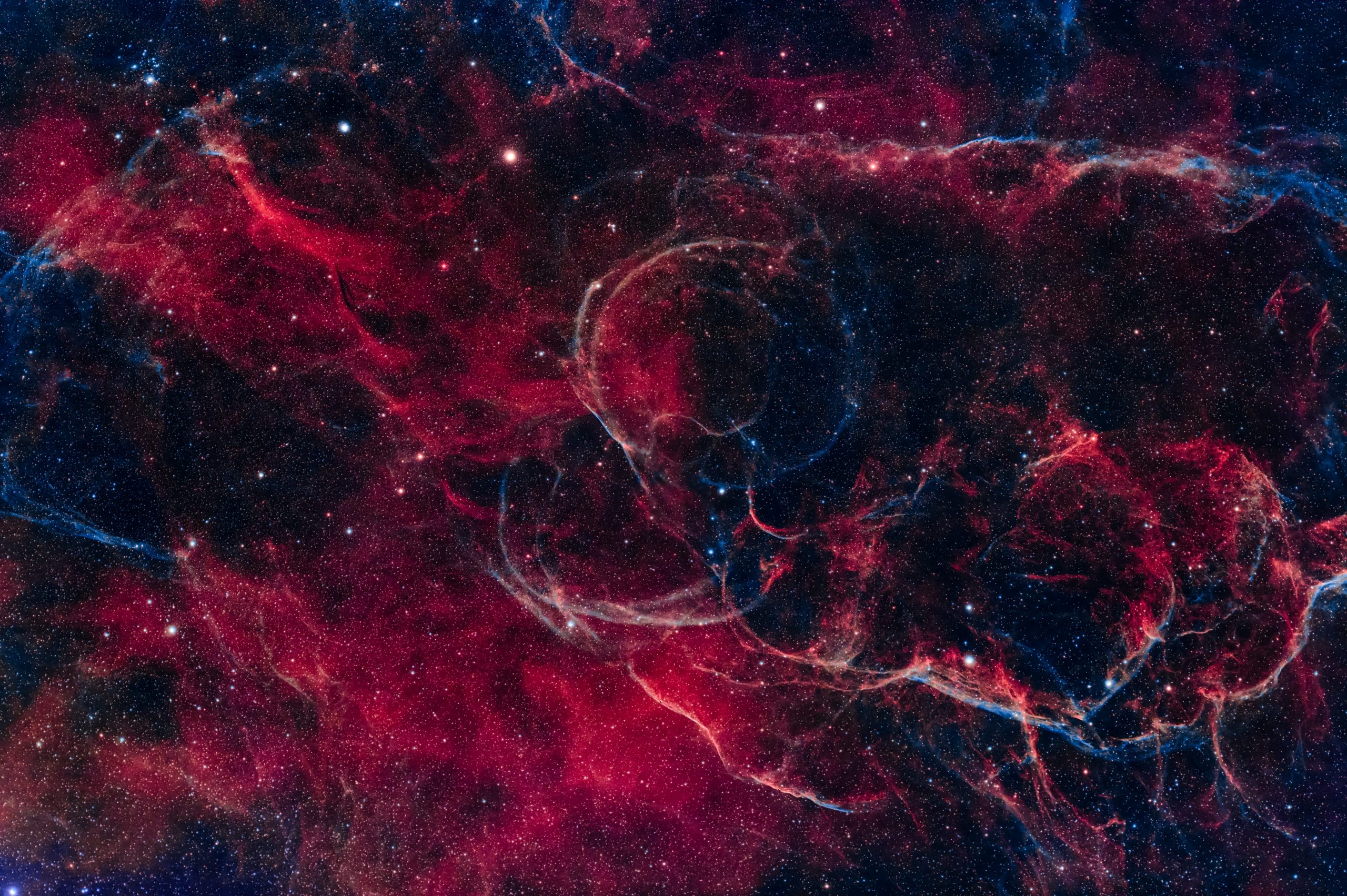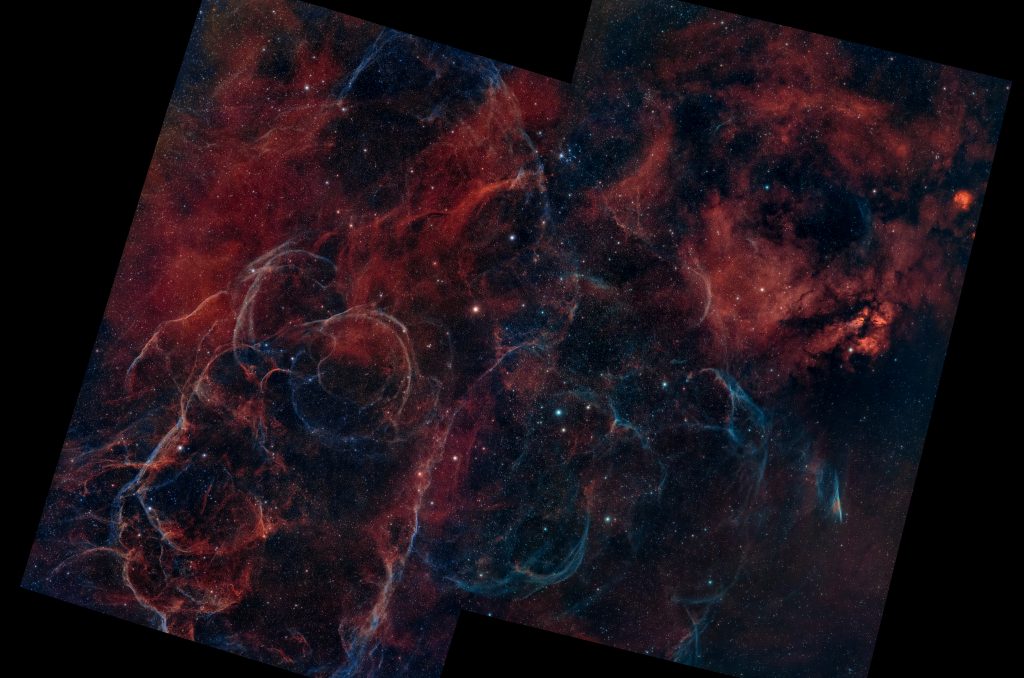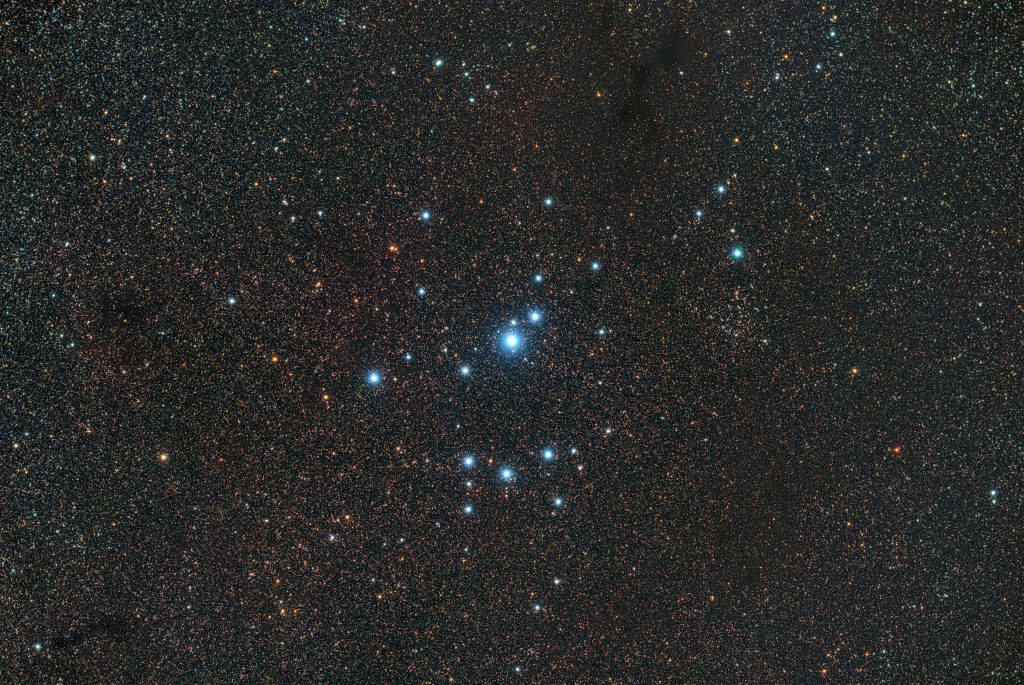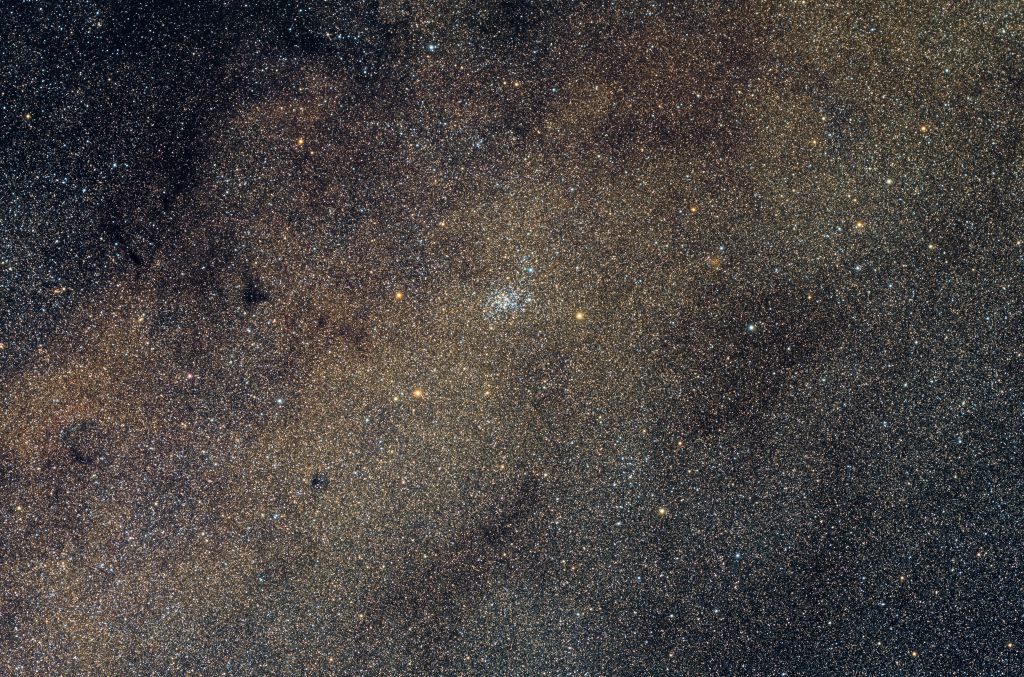NGC 6188 is sometimes called The Fighting Dragons of Ara. As a fan of Game of Thrones or Hobit, I simply had to capture this beauty. Two dragons are clearly visible in the middle. Their heads are illuminated by the open cluster NGC 6193. I knew that this nebula is dim, so I dedicated a lot of time to it. Specifically, I stacked 86 narrow band pictures, each 5 minutes long.
Update 9.2.2023. I am happy to announce that this photo won Czech astrophotography of the month. I submitted several pictures already and finally, I managed. I am very happy.
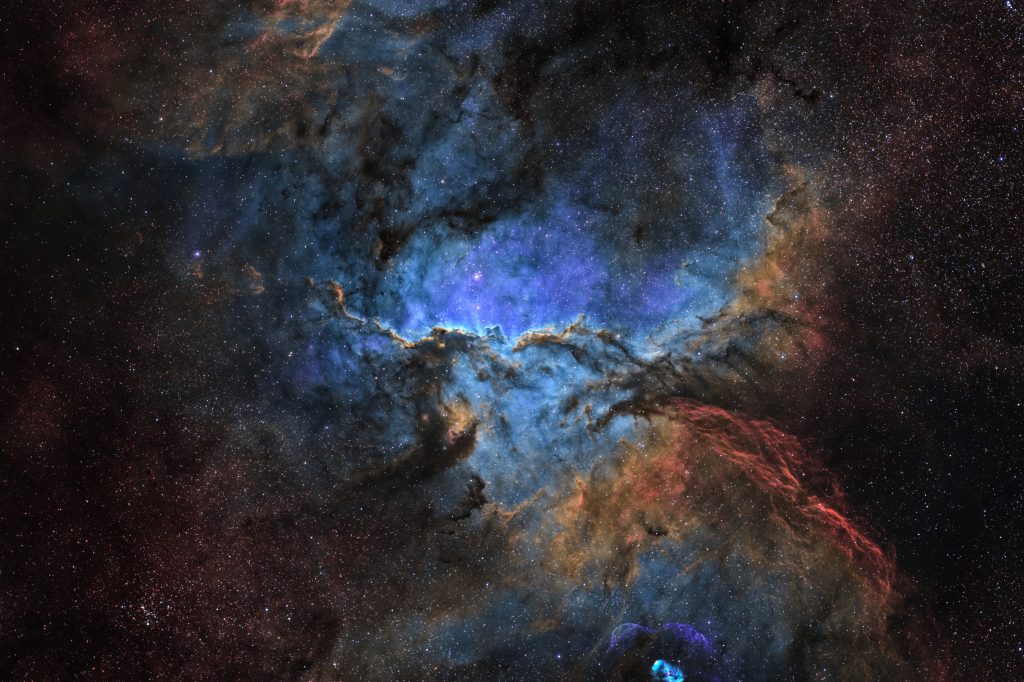
| Telescope | Sharpstar 94EDPH |
| Aperture | 94 mm |
| Focal length | 414 mm |
| Mount | Rainbow Astro RST 135 |
| Autoguiding | ZWO 174MM, QHY Mini Guide Scope |
| Camera | ZWO 2600MM @-10°C |
| Corrector | F4.4 Quad Reducer |
| Filters | Antlia Ha, OIII, SII 3 nm |
| Exposure | 86x300s, Gain 100, bin 1x1, |
| Date | 2022-05-30 |
And here is a photo of the same object, just with a shorter focal length.
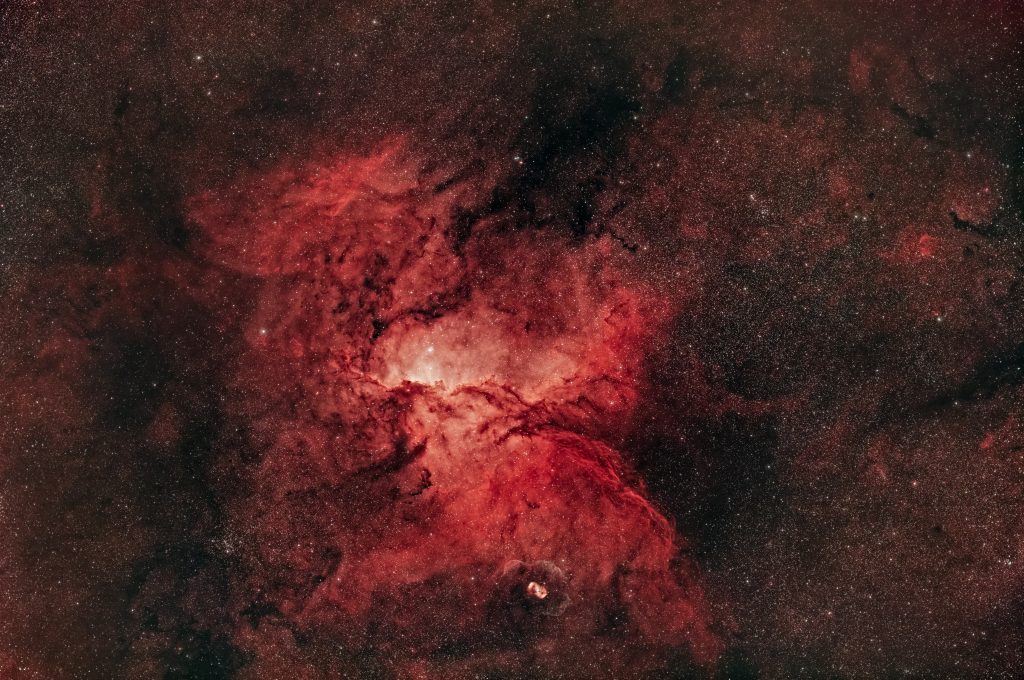
| Telescope | William Optics RedCat 51/250 f4.9 |
| Aperture | 51 mm |
| Focal length | 250 mm |
| Mount | iOptron Skyguider Pro |
| Autoguiding | ZWO 178MM, QHY Mini Guide Scope 30/130 mm |
| Camera | ZWO ASI071 MC Pro @-10 °C |
| Filters | Antlia Dual Band 5 nm |
| Exposure | 72x300s, ISO 1600 |
| Date | 2022-06-01 |

